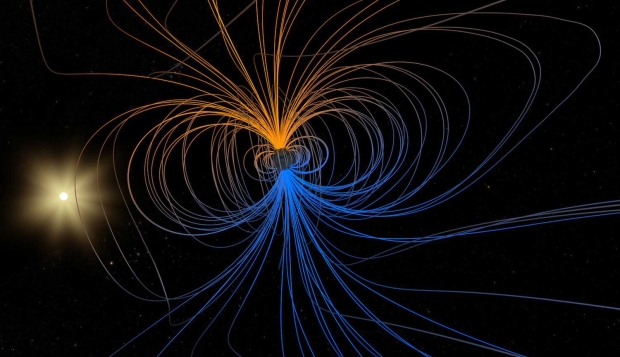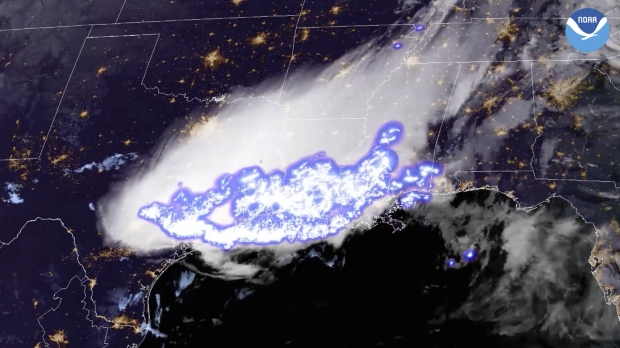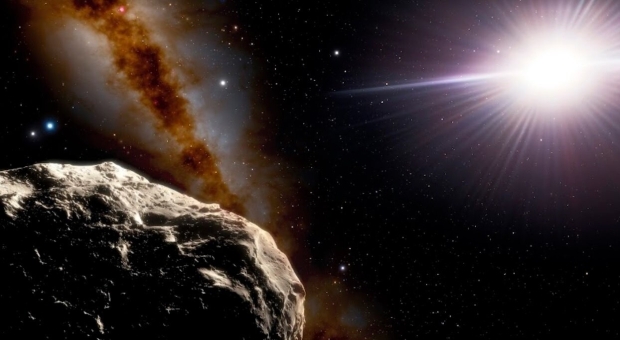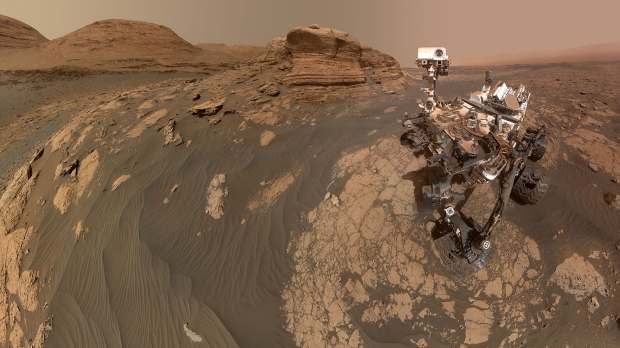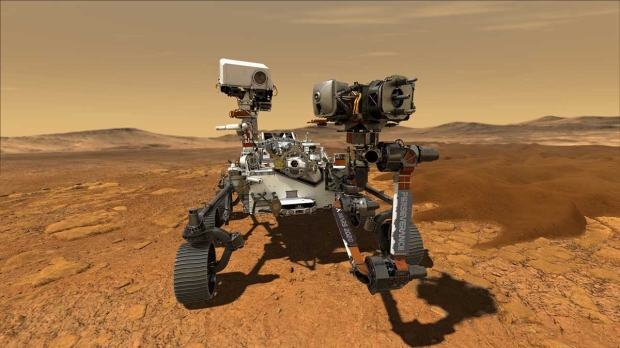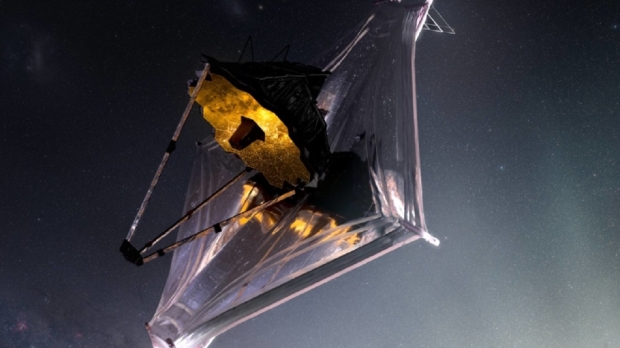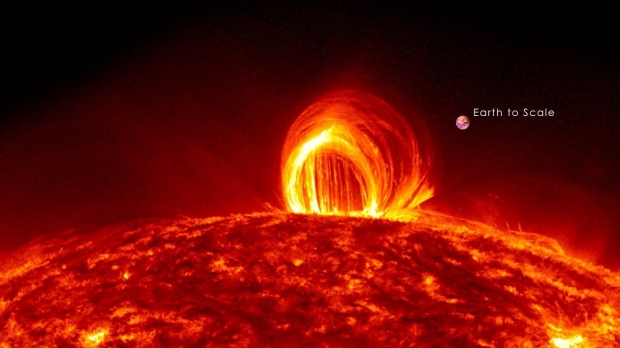Science, Space, Health & Robotics News - Page 192
315-million-pixel Hubble image showcases the beauty of the universe
NASA has taken to its blog to explain that the Hubble Space Telescope has been used to observe a region of space called the Chamaeleon Cloud Complex.
The Chamaeleon Cloud Complex is a star-forming region that stretches 65-light years wide. The above photograph is a composite image called Chamaeleon Cloud I (Cha I), and it showcases the reflection nebulae glowing with the light of the young blue stars. Additionally, the dusty dark clouds seen throughout the image are regions of space where stars are forming. Radiant knots are also seen throughout the image. These are called Herbig-Haro objects.
NASA explains, "Herbig-Haro objects are bright clumps and arcs of interstellar gas shocked and energized by jets expelled from infant "protostars" in the process of forming. The white-orange cloud at the bottom of the image hosts one of these protostars at its center. Its brilliant white jets of hot gas are ejected in narrow torrents from the protostar's poles, creating the Herbig-Haro object HH 909A."
Continue reading: 315-million-pixel Hubble image showcases the beauty of the universe (full post)
MIT physicists have used light to manipulate a material's magnetism
A study published in the journal Nature Communications describes the discovery.
The researchers were able to change the magnetic properties of nickel phosphorus trisulfide (NiPS3), by way of a quasiparticle known as "excitons." An exciton refers to an electron and a "hole" left behind where the electron was when it moves after absorbing energy from an incoming photon of light. Quantum mechanics mean the electron and the hole remain connected.
"The excitons in this material are rather unique in that they are coupled to magnetism in the system. It was quite impressive to be able to "kick" the excitons with light and observe the associated changes in the magnetism," said Nuh Gedik, an MIT professor of physics.
Continue reading: MIT physicists have used light to manipulate a material's magnetism (full post)
Bacteria in our gut microbiome have sex to share vitamin B12
A new study published in the journal Cell Reports describes the process.
Most living cells require vitamin B12 to function, including the bacterial cells found in your gut microbiome. Researchers from the University of California Riverside (UCR) have found that beneficial gut microbes can share the ability to acquire vitamin B12 with one another through bacterial sex, or bacterial conjugation.
"The process involves one cell forming a tube that DNA can pass through to another cell. It's as if two humans had sex, and now they both have red hair. We're excited about this study because it shows that this process isn't only for antibiotic resistance. The horizontal gene exchange among microbes is likely used for anything that increases their ability to survive, including sharing vitamin B12," said study lead Patrick Degnan, a microbiologist at UCR.
Continue reading: Bacteria in our gut microbiome have sex to share vitamin B12 (full post)
768-kilometer lightning megaflash breaks one of two new world records
The megaflash occurred in the United States on April 29th, 2020.
The lightning flash spanned 768 kilometers (447.2 miles) across Mississippi, Louisiana, and Texas. The United Nation's World Meteorological Organization (WMO) noted that this distance is equivalent to that between New York City and Columbus, Ohio, or between London, England and Hamburg, Germany.
This flash breaks the previous world record set in southern Brazil on October 31st, 2018, by approximately 60 kilometers. Another world-record was also certified in the latest WMO statement for the longest duration flash. The flash that broke the previous record occurred over Uruguay and northern Argentina on June 18th, 2020, and lasted for 17.1 seconds, breaking the previous record by 0.37, which was also set in northern Argentina, on March 4th, 2019.
Continue reading: 768-kilometer lightning megaflash breaks one of two new world records (full post)
Second-ever Trojan found near Earth will stay close by for 4,000 years
A study confirming the asteroid's existence has been published in the journal Nature Communications.
The asteroid is dubbed 2020 XL5 and is the second confirmed transient Earth Trojan asteroid. These asteroids are found orbiting the L4 or L5 Lagrangian points, highly gravitationally stable points in space. Newton's laws of gravity result in five of these points in the Earth-Sun system, where the gravitational forces acting on an object cancel out.
The asteroid is expected to stay at the L4 Lagrangian point for four thousand years. 2020 XL5 is estimated to be approximately 1.2 kilometers (0.75 miles) in diameter, compared to the first-identified Earth Trojan 2010 TK7, which has a diameter of ~380 meters. The shared orbit between the L4 point and Earth could allow spacecraft to visit the asteroid with a low energy budget.
Continue reading: Second-ever Trojan found near Earth will stay close by for 4,000 years (full post)
Mars Curiosity rover finds potentially biological carbon signature
NASA's Curiosity rover has been scouring the Martian surface since 2012.
The rover has detected a rich carbon signature associated with biological processes on Earth amongst samples collected from the Gale Crater. The samples were analyzed using the Tunable Laser Spectrometer (TLS) and Sample Analysis at Mars (SAM) instruments, but the detection doesn't directly point to any ancient life on Mars.
"We're finding things on Mars that are tantalizingly interesting, but we would really need more evidence to say we've identified life. So we're looking at what else could have caused the carbon signature we're seeing if not life," said Paul Mahaffy, former principal investigator of the SAM instrument at NASA's Goddard Space Flight Center.
Continue reading: Mars Curiosity rover finds potentially biological carbon signature (full post)
NASA's Mars rover sampled a rock that 'almost looked surprise'
NASA has taken to its Perseverance Twitter account to post an image of a rock that was recently sampled by the Mars rover.
At the end of last month, NASA explained that its Mars rover named Perseverance was "constipated" with nasty martian pebbles causing numerous problems for collecting new samples. After some time, the Perseverance team decided it would perform rotational tests of the carousel to dislodge the rocks, and those rotational tests were a success. Additionally, the space agency also emptied the contents of Sample Tube 261.
Now that those hurdles have been overcome, Perseverance is back at the same location where the hurdles arose. As NASA writes in the above Twitter post, "this rock almost looked surprised that I was coming back!", referring to discarded contents of Sample Tube 261. Perseverance has successfully collected a sample from what could be one of the oldest rocks that the rover samples. For more information on this story, check out this link here.
Continue reading: NASA's Mars rover sampled a rock that 'almost looked surprise' (full post)
NASA drops big update for James Webb Telescope, revealing what's next
NASA has taken to its blog to provide an update for the world's most powerful space telescope - the James Webb Space Telescope.
In a recent statement from the space agency, now that the James Webb Space Telescope (JWST) has arrived at its destination of Lagrange Point 2 (L2), a specific point in space that keeps the Earth in between the Sun and the telescope at all times, the months-long process of getting all of JWST's instruments up and running can begin.
NASA writes that the JWST team is currently preparing to turn off its heaters that have been keeping its extremely sensitive instruments nice and warm throughout its journey. JWST's Mid-Infrared Instrument has an operating temperature of -449 Fahrenheit, as its designed to observe the middle of the infrared spectrum. If an object is warm on JWST, it may interfere with the observations made by the telescope, hence the operating temperature being so low.
Continue reading: NASA drops big update for James Webb Telescope, revealing what's next (full post)
Officials confirm arrival date for powerful solar flare and Sun blast
Officials reported that a big sunspot group erupted on January 30, causing a long-duration M1-class solar and a coronal mass ejection to be hurled towards Earth.
SpaceWeather.com reports that the eruption happened during the early hours of Saturday morning and caused a large explosion on the surface of the Sun. It should be noted that the M1-class solar flare is a medium-sized solar flare and isn't going to wipe out the human race. However, flares of this power can cause communications issues for satellites as well as radio blackouts on Earth.
The solar flare came from sunspot group AR2936, and the burst lasted four hours, hence the name "long-duration". As for the coronal mass ejection (CME) - charged particles ejected from the Sun's corona - the National Oceanic and Atmospheric Administration (NOAA) predict that the blast will hit Earth on Wednesday, February 2, and may cause G2-class geomagnetic storms which are "low hazard". On a more positive note, the CME from the Sun could cause auroras to appear in the sky from the Arctic Circle to the northern United States.
Continue reading: Officials confirm arrival date for powerful solar flare and Sun blast (full post)
US flood damage costs will see a 'staggering' increase by 2050
A new study published in Nature Climate Change has modeled the future of floods in the United States.
Researchers have estimated that the annual cost of flood damage in the U.S. will increase by 26.4 percent by 2050. The average annual flood losses amount to about $32 billion and are estimated to increase to $40.6 billion in 2050, based on 2021 dollar values. Their research emphasizes that the brunt of this financial hit will fall on disadvantaged communities.
"Climate change combined with shifting populations present a double whammy of flood risk danger and the financial implications are staggering. The mapping clearly indicates Black communities will be disproportionately affected in a warming world, in addition to the poorer White communities which predominantly bear the historical risk," said lead author Oliver Wing of the University of Bath's Cabot Institute for the Environment.
Continue reading: US flood damage costs will see a 'staggering' increase by 2050 (full post)



